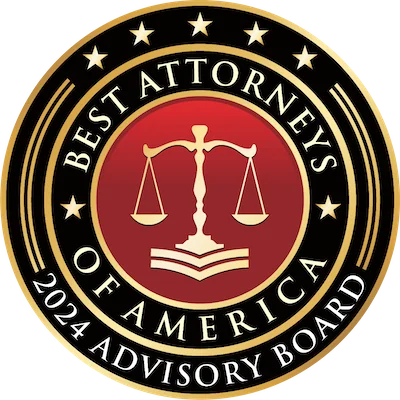As someone working in a law firm that navigates the complexities of Florida’s insurance landscape daily, I understand how overwhelming it can be to ensure you’re adequately protected on the road. One critical aspect that often gets overlooked is uninsured motorist coverage in Florida. In this blog, I’ll walk you through what uninsured motorist coverage entails and why it’s so essential for drivers in our state.
Table of Contents
- Understanding Uninsured Motorist Coverage
- Legal Requirements in Florida
- How Uninsured Motorist Coverage Works
Understanding Uninsured Motorist Coverage
Definition and Importance
Uninsured motorist coverage, often abbreviated as UM coverage, is a type of auto insurance designed to protect you if you’re involved in an accident with a driver who doesn’t have liability insurance. It’s essentially your safety net when the other party lacks the necessary financial protection. This kind of coverage ensures that even if the at-fault driver cannot pay for damages or medical expenses, you won’t be left shouldering those burdens alone.
Why is this important? In Florida, despite legal requirements mandating drivers to carry minimum levels of car insurance, there are still many motorists (1 in 4!) on the road without any form of liability coverage. The risk isn’t negligible—getting into an accident with one such uninsured driver could lead to significant out-of-pocket costs unless you have adequate UM coverage.
Types of Scenarios Covered
UM coverage can come into play in various scenarios:
- Hit-and-Run Accidents: If you’re struck by a hit-and-run driver who flees the scene and can’t be identified.
- Accidents With Completely Uninsured Drivers: When another motorist has no insurance whatsoever.
- Underinsured Motorists (Optional Add-On): Some policies also include underinsured motorist (UIM) provisions where your policy steps in when the at-fault driver’s liability limits aren’t enough to cover all your expenses.
This means whether it’s bodily injury or property damage resulting from these incidents, having UM/UIM can significantly alleviate potential financial strains post-accident.
Legal Requirements in Florida
State Laws and Regulations
In Florida, the laws surrounding car insurance can be somewhat intricate. While the state mandates that all drivers carry a minimum amount of auto insurance, it doesn’t specifically require uninsured motorist coverage. However, insurers are required to offer UM coverage when you purchase your policy. You have the option to reject this in writing if you choose not to include it.
Florida operates under a “no-fault” system for car accidents, meaning each driver’s own Personal Injury Protection (PIP) covers their medical expenses regardless of who is at fault up to $10,000. But what happens when costs exceed this limit or involve significant property damage? That’s where additional coverages like UM become vital.
Minimum Insurance Requirements
To legally drive in Florida, you’re required to have:
- Personal Injury Protection (PIP): Minimum of $10,000.
- Property Damage Liability (PDL): Minimum of $10,000.
These requirements aim to ensure that basic financial responsibilities are met after an accident but fall short in scenarios involving severe injuries or extensive vehicle damage caused by an uninsured driver.
UM coverage isn’t mandated but highly recommended as part of a comprehensive protection strategy because PIP alone often won’t suffice for more serious incidents.
By understanding these legal stipulations and recognizing potential gaps left by standard policies without UM/UIM inclusion—you can make informed decisions about bolstering your overall automotive safety net effectively against uninsured motorists on Floridian roads!
How Uninsured Motorist Coverage Works
Step-by-Step Process After an Accident with an Uninsured Driver
When you find yourself in the unfortunate situation of being involved in a car accident with an uninsured driver, it’s essential to know how your uninsured motorist (UM) coverage comes into play. Here’s a detailed breakdown of what typically happens:
- Ensure Safety and Call Authorities: First and foremost, ensure everyone’s safety by moving to a safe location if possible and calling emergency services.
- Gather Information: Collect as much information as you can from the scene—photos of damages, witness statements, and details about the other vehicle—even if they lack insurance.
- Notify Your Insurance Company: As soon as you’re able, contact your insurance provider to report the incident. They will guide you through initiating a UM claim.
- File Police Report: A police report is crucial for documenting the accident officially; this will be required when filing your claim.
- Medical Evaluation: Even if injuries seem minor initially, get checked out by a healthcare professional immediately following the collision – often symptoms may manifest later on potentially exacerbating without timely intervention!
Claims Process Begins
- Documentation: Submit all necessary documents including medical records, repair estimates, etc., supporting the case thoroughly and thereby expediting the resolution timeframe significantly!
- Adjuster Review: An adjuster is assigned to evaluate the extent of losses incurred, ensuring fair compensation is awarded based on policy terms and conditions stipulated beforehand!
This stepwise approach ensures a seamless transition from shock aftermath towards securing rightful recompense under prevailing circumstances efficiently and effectively, minimizing additional stressors during an already challenging period of life!!
At Silver Injury Law, we assist our clients with every aspect of their personal injury claim, from collecting evidence and dealing with hospitals to insurance companies. Whether you have been involved in a boca raton car accident, a motorcycle accident, or even an accident with a commercial vehicle, we can help. Contact us today for more information.




